While much of the world marvels at the incredible photos coming out of Chile, where the Calbuco volcano erupted twice over the last few days and spewed a massive cloud of ash high into the sky, there are probably more than a few anglers wondering what might become of their planned trips to Patagonia to chase trout next fall and winter.
If other recent eruptions have anything to teach us, you can likely put your fears on the backburner. This is the third time in the last six years that a major volcanic eruption in Chile has occurred, and each past eruption has had only highly localized effects on small streams, leaving most of Patagonia's expanse of fishing waters practically unaffected.
According to Rance Rathie, co-owner of Patagonia River Guides (PRG) in Trevelin, those previous eruptions produced no impacts on their Patagonia rivers. Granted, Rathie and his partner Travis Smith have a dog in the hunt, but if anecdotal evidence is worth anything, it’s easy to believe what he’s saying. Hatch Magazine visited Patagonia earlier this month, and, even in the areas most acutely impacted by the last eruption in 2011 -- valleys through which rivers like the Traful and Filo Hua Hum flow -- the fishing was robust, and not just for big fish, but for young-of-the year and mid-sized trout, as well.

That said, Cabulco, which last erupted in 1961, has belched a pretty spectacular cloud of ash and smoke some nine miles into the sky, and the ash cloud is moving east over Patagonia in western Argentina. It could move as far east as Buenos Aires province, about 930 miles east of its source, but it’s important to note that Cabulco, as the crow flies, is just about 100 miles east of San Carlos de Bariloche in the fishy heart of north-central Patagonia.
The good news for anglers, though, is that, to date, the Cabulco eruption “has been slightly less serious” than the 2011 eruption of Puyehue-Cordón-Caulle volcano in Chile. Ignacio Lopez, a meteorologist at Argentina's national meteorology center, told Reuters this week. In fact, he said, he doesn’t expect a significant ash fall on the city of Buenos Aires itself unless Cabulco erupts again in the short term (it’s erupted twice over the last week, and there are concerns it will go off again).
PRG’s lodge is situated about a four-hour drive south of Bariloche. Rathie said Thursday that there was currently no ash on the ground in Trevelin. And, he maintains, even if ash-fall does occur, there’s no reason to believe it will have a negative impact on fishing in the region.
“In both previous eruptions, nothing -- absolutely nothing -- negative happened other than keeping a few people from traveling to Patagonia to fish, which had its own way of improving the fishing,” Rathie said.
According to a 2104 report by the Argentine Ecological Society, there were impacts from Puyehue-Cordón-Caulle volcanic eruption in 2011 on some Patagonian waters that were studied after the event, but it also appears that those waters were quick to recover. The most severe damage occurred directly after the eruption and the ash-fall, when drifts of ash caused damming and coated the bottom of the smaller waters studied in the report. There was an impact on some aquatic insect life, the study notes, and some certain species of insects have not yet recovered, while other species, like chironomids, are thriving -- possibly because they recover quickly, and because they can tolerate softer, muddier bottoms. Keep in mind that Patagonia isn’t just a land of rivers -- it’s land of lakes, too. Chironomids are likely present in most of the region’s lakes -- the ash fall from 2011 simply improved habitat for this little critter by making some of the slower-moving rivers even more hospitable.
And, according to the study, affected streams will likely improve over time.
“It seems reasonable to predict that natural runoffs will continue to clean the streams, and, eventually, they will return to similar pre-eruptive conditions,” the study reads.
Trout and volcanoes have co-existed for millions of years -- in the McCloud River in northern California, a unique strain of rainbows still persists, even after enduring an untolled number of volcanic eruptions over the centuries. Today, on the slopes of Mount St. Helens in Washington, rainbow trout are thriving in Spirit Lake, only 35 years after the mountain blew its top.
The fact that Cabulco’s eruption occurred in the autumn, with Patagonia’s rainy winter season knocking at the door, may also play an important role in limiting its effects on the region’s fishing, even in the areas surrounding San Martin de los Andes in northern Patagonia where several inches of ash fall have led to very serious issues with transportation and air quality.
“I don't expect any short- or long-term consequences, especially considering the timing of the eruption,” Rathie said. Rathie pointed out that rivers in Patagonia don’t drop and freeze like the rivers in the Rockies. Rather, they rise and flow with greater velocity thanks to winter rains -- any ash that falls directly into the rivers will likely be carried downstream by winter rains and high-country runoff.
“The normal October and November winds should take care the rest that didn't get flushed or taken into the ground,” Rathie said. “In all likelihood, no one will even know there was an eruption come December.”
Indeed, the only evidence of the Puyehue-Cordón-Caulle eruption is remnant ash lining the valleys and some of the high peaks north of Bariloche in north-central Patagonia. The fishing in Patagonia hasn’t missed a beat.
Paramount among all may be the sure immensity of Patagonia. The ash cloud from 2011 dropped a coating of ash across a swath of the northern reaches of the region, while having little or no impact on the rest of the area. Given the enormous number of choices and miles of trout-choked rivers that predominate Patagonia's landscape, highly localized effects -- should they occur -- will be easily avoided.




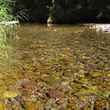
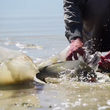
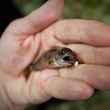




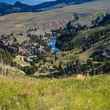
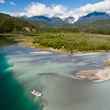



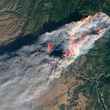
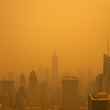



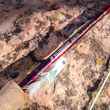








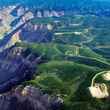
Comments
Dale Heinemann replied on Permalink
Chad,
Was checking on the volcano effect on the internet and found you article. Absolutely the best reporting I could find.
Thanks
Dale
Pages